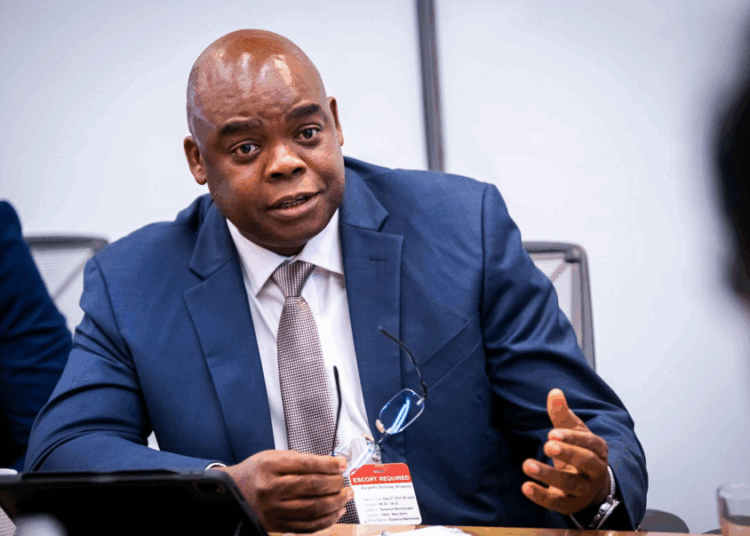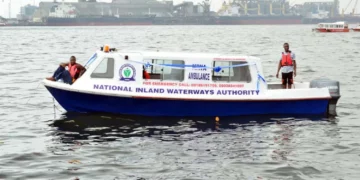In this interview,the Secretary of the Universal Service Provision Fund (USPF), Yomi Arowosafe,
emphasised the need to enhance digital inclusion and internet access across the country.
What is the Universal Service Provision Fund all about and its mandate
The Universal Service Provision Fund (USPF) was established under the Nigerian Communications Act 2003 to facilitate universal access to information and communication technologies (ICTs), particularly in rural, unserved and underserved areas.
The Fund supports digital infrastructure development, including mobile base stations, telephony services, fiber optic cables and digital hubs.
Beyond connectivity, USPF implements projects that support education by providing equipment and infrastructure to schools, including assistive technologies for students with disabilities. The overall goal is to ensure that people in remote communities have the same digital opportunities as those in urban centres.
Why is the Federal Ministry of Communications prioritising digital inclusion?
The private sector naturally invests in areas with higher commercial viability, which leaves some communities behind. The USPF’s role is to address this disparity by ensuring that connectivity and access reach areas that would otherwise remain excluded.
Digital inclusion enables a wide range of benefits – from access to educational resources and health services to agricultural information and business opportunities. For instance, internet access in remote areas allows students to participate in online learning, farmers to access market data and healthcare workers to connect with patients more effectively.
Our Access Gap Map, which outlines areas lacking digital access, has become a key tool for planning and policy formulation. It informs our strategy and helps track progress toward closing the digital divide.
Can you highlight some recent USPF projects and their outcomes?
One notable project is the Emerging Technologies Centre at the Ogun State Institute of Technology (OGITECH), Igbesa. The centre, equipped with 100 desktop computers, solar power, and high-speed internet, supports over 9,000 students. Students there are now engaged in developing drones and exploring partnerships with farmers for drone-assisted agriculture.
Nationally, USPF has funded over 2,500 education-related projects since 2007, delivering more than 100,000 computers and enabling digital learning in numerous schools. In some cases, school enrollment has significantly increased following these interventions. For example, one rural school saw its enrollment rise from 200 to 1,000 students.
In addition, we are expanding core network infrastructure. We have announced plans to install 1,000 new mobile base stations by 2030 to improve connectivity in remote areas. These efforts have contributed to narrowing Nigeria’s connectivity gap by nearly 60 percent since 2013, connecting an estimated 13.8 million more Nigerians.
How does USPF ensure the sustainability of its projects?
Sustainability is a core consideration in our implementation strategy. We engage local stakeholders – including school administrators, state governments and community groups – from the outset. In some cases, we sign Memoranda of Understanding (MoUs) with institutions to ensure responsible management of infrastructure.
For example, the OGITECH centre is managed under such an MoU. We also train local personnel – teachers, librarians and entrepreneurs – to operate and maintain the equipment. In schools with limited administrative capacity, we partner with the National Youth Service Corps (NYSC) and School-Based Management Committees to ensure continued use and maintenance.
These strategies are part of a broader institutional shift to embed sustainability into every project, a key reason behind the creation of the USPF Impact Alliance.
What is the USPF Impact Alliance and what does it aim to achieve?
The USPF Impact Alliance is a strategic initiative designed to focus more deliberately on the long-term outcomes of our digital inclusion efforts, particularly in education. Through stakeholder consultations, we are refining our approach to go beyond infrastructure delivery and prioritise measurable impact.
The Alliance brings together public and private stakeholders to co-create sustainable, evidence-based solutions that support inclusive education and connectivity. It also emphasises ongoing monitoring and evaluation to ensure that interventions meet their intended goals.
We believe that this collaborative model can serve as a blueprint for similar initiatives across Africa. By involving partners early and focusing on shared objectives, we aim to enhance both the reach and effectiveness of digital access programmes.
Your message for Nigerians about USPF and the future of digital access in the country?
Digital inclusion is critical to national development. The Federal Government’s digital expansion agenda provides an opportunity to ensure that all Nigerians, regardless of location, can participate in and benefit from the digital economy.
USPF remains committed to this mission. Whether through new infrastructure or partnerships with local communities, we are focused on ensuring that every Nigerian has access to the tools and opportunities that connectivity provides. Each successful project brings us closer to a more inclusive digital future.





